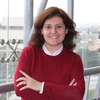Tese de Doutoramento
Three-dimensional culture systems for the study of human pluripotent stem cells: microarrays and spheroids
— 2020
Informações chave
Autores:
Orientadores:
Publicado em
07/01/2020
Resumo
As células estaminais pluripotentes humanas têm a capacidade de se autorrenovar e de gerar derivados das três camadas germinativas. Por esse motivo, representam um potencial significativo para estudos em embriogénese, screening de fármacos e, em particular, para o desenvolvimento de aplicações terapêuticas para medicina regenerativa e de precisão. Este potencial motivou muita da investigação feita durante os últimos vinte anos em biologia de células estaminais, mas a sua concretização tem sido retardada devido a uma incompleta compreensão dos complexos e intrincados mecanismos moleculares e dos sinais do microambiente que controlam a autorrenovação e diferenciação celulares. Para mais, o desenvolvimento de sistemas de cultura tridimensionais de células estaminais pluripotentes, além de potenciar estratégias de scale-up, providenciou modelos celulares in vitro que mimetizam mais fidedignamente as condições in vivo, ao emular interações célula-célula, gradientes químicos e sinais biomecânicos que nos tradicionais sistemas bidimensionais são residuais ou inexistentes. A utilização de plataformas de high-throughput screening para estudar os efeitos de sinais do microambiente, tais como fatores solúveis, pode contribuir significativamente para a criação de modelos mecanísticos que descrevam as interações moleculares que definem as decisões celulares. O objetivo geral da presente tese foi desenvolver, caracterizar e compararsistemas de cultura tridimensional de células estaminais pluripotentes humanas, especificamente: 1) desenvolver uma plataforma de microarray celular tridimensional para estudos high-throughput, incluindo ferramentas quantitativas e de análise de imagens para avaliar viabilidade e proliferação celulares, bem como a expressão de marcadores, e testar o efeito de diferentes compostos diluídos no meio de cultura na autorrenovação e diferenciação; e 2) caracterizar a cultura em suspensão estática de células estaminais pluripotentes humanas como esferoides, em termos de crescimento, tamanho, morfologia e expressão de marcadores de pluripotência e diferenciação, e investigar se os resultados obtidos na plataforma de microarray são replicáveis neste sistema de cultura. Espera-se que os resultados apresentados contribuam para o desenvolvimento de novas metodologias e plataformas de estudo, e para a compreensão geral de como as condições de cultura tridimensional influenciam as células estaminais pluripotentes humanas. Human pluripotent stem cells have the ability to self-renew and to generate derivates of the three germ layers. For this reason, they hold significant potential for the study of embryogenesis, drug screening and, particularly, the development of therapeutic applications for regenerative and precision medicine. This potential fueled much of the research and advances made in stem cell biology during the last twenty years, but its translation to practice has been hindered by an incomplete understanding of the complex and intricate molecular mechanisms and microenvironmental cues that control self-renewal and differentiation. Furthermore, the development of three-dimensional culture systems for human pluripotent stem cells enhanced the potential of scale-up approaches and provided in vitro cellular models that better resemble in vivo conditions, by emulating cell-cell interactions, chemical gradients and biomechanical signals that are reduced or absent in traditional two dimensional cultures. The use of high-throughput screening platforms to study the effects of microenvironmental cues, such as soluble factors, can greatly contribute to the establishment of mechanistic models to describe the molecular interactions that drive stem cell fate. The general aim of this thesis was to develop, characterize and compare three-dimensional culture systems for human pluripotent stem cells, specifically: 1) to develop a three-dimensional cellular microarray platform for high-throughput studies on human pluripotent stem cells, including quantitative image analysis tools to assess cellular viability, growth, and marker expression, and test how different media-diluted compounds affect cell proliferation and pluripotency maintenance; and 2) to characterize human pluripotent stem cell spheroids cultured in static suspension in terms of growth, size, morphology, and marker expression for pluripotency maintenance and differentiation, and study how the results obtained in the microarray platform translate to this culture system. The results presented will hopefully contribute to the development of new methodologies and study platforms, and to the overall understanding of how human pluripotent stem cells are affected by three-dimensional culture conditions in vitro.
Detalhes da publicação
Autores da comunidade :
Jorge Filipe da Conceição Pascoal
ist174400
Orientadores desta instituição:
Joaquim Manuel Sampaio Cabral
ist11432
RENATES TID
101354193
Designação
Doutoramento em Bioengenharia
Domínio Científico (FOS)
industrial-biotechnology - Biotecnologia Industrial
Palavras-chave
- Células estaminais pluripotentes humanas
- microarray celular
- high throughput screening
- esferoides celulares
- cultura em suspensão estática
- Human pluripotent stem cells
- cellular microarray
- high-throughput screening
- cellular spheroids
- static suspension culture
Idioma da publicação (código ISO)
eng - Inglês
Acesso à publicação:
Embargo levantado
Data do fim do embargo:
18/11/2020
Nome da instituição
Instituto Superior Técnico


